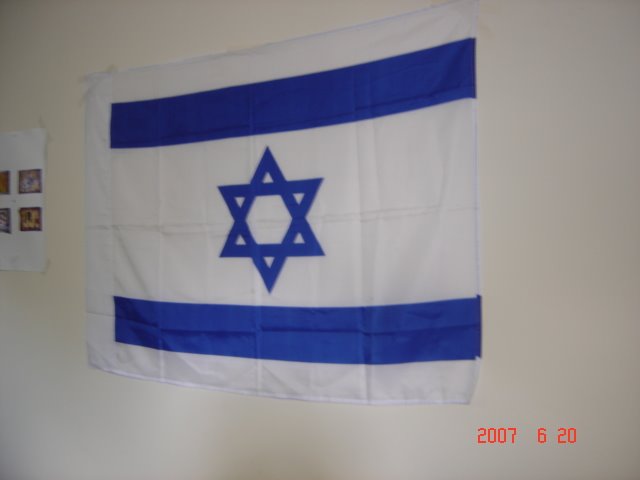On The Balance of Israel’s National SecurityJanuary 21-24, 2006* Double click on the name of the speaker in order to read the lecture
Saturday, January 21, 2006
Greetings:
Yael German, Mayor of HerzliyaOpening Remarks: National Resilience in the Face of Risks and Opportunities
Prof. Uzi Arad, Chair, Herzliya Conference; Head, Institute for Policy and Strategy
Assessing Israel's National Security and the “Herzliya Indices 2006”
Chair:
Israel Trau, Assistant General Manager, First International Bank of Israel
Prof. Rafi Melnick, Dean, Lauder School of Government, Diplomacy and Strategy, IDC Herzliya
Maj. Gen. (res.) Giora Eiland, Head of the National Security Council
Prof. Gabriel Ben-Dor, Director, National Security Studies Center, University of Haifa
Discussion
Lt. Gen. (res.) Shaul Mofaz, Minister of Defense
20:00 Dinner
Opening Ceremony
Chair:
Prof. Uriel Reichman, President, IDC Herzliya
Prof. Israel (Robert) J. Aumann, Nobel Prize Laureate in Economics; Center for the Study of Rationality, Hebrew University of Jerusalem
Prof. Haim Harari, Chairman of the Board, Davidson Institute for Science Education, Weizmann Institute
Sunday, January 22, 2006
08:00 Morning Sessions
National Security Policy as Risk Management
Chair:
Maj. Gen. (res.) Eitan Ben-Eliyahu, CEO, Sentry Technology Group
Prof. Paul R. Kleindorfer, Wharton School, University of Pennsylvania
Prof. Paul Bracken, School of Management and Department of Political Science, Yale University
Discussion
Strategic Trends on the Global Landscape
Chair:
Prof. Jerry (Yoram) Wind, Wharton School, University of Pennsylvania
Stanley Roth, Vice President for Asia, International Relations, Boeing Company
Dr. Nicholas Eberstadt, American Enterprise Institute for Public Policy Research
Dr. Robert Trice, Senior Vice President, Business Development, Lockheed Martin Corporation
Prof. Jacob Frenkel, Vice Chairman, AIG and Former Governor of the Bank of Israel
Discussion
Discussants:
Dr. Dan Schueftan, Deputy Director, National Security Studies Center, University of Haifa
Dr. Shmuel Bar, Institute for Policy and Strategy, IDC Herzliya
Lt. Gen. Dan Haloutz, Chief of General Staff, IDF
The Nuclearization of Iran – Strategic Implications
Chair:
Maj. Gen. (res.) David Ivry, Chairman, Board of Directors, Fisher Brothers Institute for Air and Space Strategic Studies
Philippe Errera, Directeur adjoint, Centre d’Analyse et de Prévision, Ministère des Affaires Etrangères, France
Sir Michael Quinlan, Consulting Senior Fellow, International Institute for Strategic Studies
Maj. Gen. (res.)
Prof. Isaac Ben-Israel, Head, Security Studies Program, Tel Aviv University
DiscussionDiscussants:
MK Dr. Ephraim Sneh, Chairman, Subcommittee for Defense Doctrine, Knesset Foreign Affairs and Defense Committee
MK Prof. Arieh Eldad, Knesset Foreign Affairs and Defense Committee
MK Dr. Yuval Steinitz, Chairman, Knesset Foreign Affairs and Defense Committee
Lunch
14:00 Afternoon Sessions
Amb. Ron Prosor, Director General, Ministry of Foreign Affairs
MK Silvan Shalom, Former Minister of Foreign Affairs
Israel’s Standing in Europe and Future Relations with the EU and NATO
Chair:
Amb. Dr. Oded Eran, Ambassador, Head of Mission of Israel to the EU
Dr. Josef Joffe, Herausgeber/Publisher-Editor, Die Zeit, Germany
Ana Palacio, Former Minister of Foreign Affairs, Spain and Chair of the Joint Committee on European Affairs, Parliament of Spain
General the
Lord Charles Guthrie of Craigiebank, GCB, LVO, OBE
Dr. Kenneth R. Weinstein, CEO, Hudson Institute
Discussion
Discussant: Col. (res.) Uri Naaman, Coordinator for NATO and European Defense Organizations, Political-Military Bureau, Ministry of Defense
Israel’s Standing in the United States and Future Israeli-American Relations
Chair:
Amb. Zalman Shoval, Chairman, Board of Directors, Export Investment Corp., Ltd.
Mortimer Zuckerman, Chairman and Editor in Chief, U.S. News and World Report
Dr. Frank Luntz, Consultant, The Israel Trust
Rabbi Yechiel Eckstein, President, The International Fellowship of Christians and Jews (HaKeren L’yedidut Israel)
Dr. Boaz Mourad, Brand Israel Group
Malcolm Hoenlein, Executive Vice Chairman, The Conference of Presidents of Major American Jewish Organizations
Dr. Robert Danin, Deputy Assistant Secretary, Bureau of Near Eastern Affairs, US State Department
DiscussionDiscussant: Col. (res.) Dr. Eran Lerman, Director, Israel and Middle East Office, American Jewish Committee
20:00 Dinner
MK Benjamin Netanyahu, Chairman of the Likud Party
Prof. Alan Dershowitz, Harvard Law School
Carl Bildt, Former Prime Minister of Sweden
Monday, January 23, 2006
08:00 Morning Sessions
An "Atlas" of Road Maps and Options for the Israeli-Arab Process
Chair: Maj. Gen. (res.) Ilan BiranMaj. Gen. (res.) Amos Gilead, Director, Political-Military Bureau, Ministry of Defense
Adi Mintz Member of Yesha Council
Jacob Keidar, Director, Multilateral Peace Talks Coordination Department and Water Issues, Ministry of Foreign Affairs
Chair: Prof. Uriel Reichman, President, IDC Herzliya
Jimmy Carter, Former President of the United States Dr. Robert Satloff, Executive Director, Washington Institute for Near East Policy
Discussion Discussants:
Brig. Gen. Michael Herzog, Visiting Military Fellow, Washington Institute for Near East Policy
Amb. Dr. Daniel C. Kurtzer, Visiting Professor of Middle East Policy Studies, Woodrow Wilson School of Public and International Affairs, Princeton University
Eyal Megged, Author
Defensible Borders for Israel
Maj. Gen. (res.) Yaakov Amidror, Head of the Defensible Borders Project and the Institute for Contemporary Affairs, Jerusalem Center for Public Affairs
Lt. Gen. (res.) Moshe Ya’alon, Former Chief of General Staff, IDF
Amb. Dr. Dore Gold, President, Jerusalem Center for Public Affairs
DiscussionDiscussant: Brig. Gen. (res.) Oded Tyrah, President, Phoenicia America-Israel
Demography, Borders and Palestinian Statehood
Chair: Dr. Israel Elad-Altman, Institute for Policy and Strategy, IDC Herzliya
Gideon Grinstein, Founder and President, The Re’ut Institute
Prof. Gideon Biger, Department of Geography, Tel Aviv University
Prof. David Newman, Department of Politics and Government, Ben-Gurion University of the Negev
MK Dr. Ahmad Tibi, Knesset Economics Committee
Discussion
Discussants:
Bennett Zimmerman, Project Leader, “Arab Population in the West Bank and Gaza: The Million Person Gap”
Dr. Nicholas EberstadtLunch
Chair: Poju Zabludowicz, Chairman and CEO, Tamares Group
Tzipi Livni, Minister of Foreign Affairs, Minister of Justice and Minister of Immigrant Absorption
14:00 Afternoon Sessions
Jerusalem - The Capital of Israel and the Jewish People
Chair:
Rabbi Yechiel EcksteinProf. Ruth Lapidoth, The Jerusalem Institute for Israel Studies
Israel Kimchi, The Jerusalem Institute for Israel Studies
Nir Barkat, Council Member, Municipality of Jerusalem
Eitan Meir, Director General, Municipality of Jerusalem
Discussion
Discussants:
Dan Halperin, CEO, IFTIC
Dr. Moshe Amirav, Head of Public Policy Studies, Beit Berl College
The Galilee - A National Priority and Challenge
Chair: Yehiel Leket, World Chairman, Hakeren Kayemet L’Yisrael, Jewish National Fund
Amb. Prof. Aliza Shenhar, President, Emek Yezreel College
Brig. Gen. (res.)
Eival Gilady, Chairman, Western Galilee College
Efrat Duvdevani, Director, Ministry for the Development of the Negev and Galilee
Dr. Faisal Azaiza, Head, Jewish-Arab Center, Haifa University; Head, The Gustav Heinemann Institute for Middle Eastern Studies
Shlomo Bohbot, Mayor, Maalot-Tarshicha
Discussion
Discussant:
Prof. Alean Al-Krenawi, Department of Social Work, Ben-Gurion University
The Viability of Democracy: The Rule of Law and the Rulers’ Law
Chair: Prof. Amnon Rubinstein, Provost, IDC Herzliya
Adv. Elie Goldschmidt, Israel Corp.
Shelly YechimovitchMK Gideon Sa’ar, Likud Parliamentary Group Chairman
MK Yossi Sarid, Knesset Foreign Affairs and Defense Committee
Discussion Law Enforcement: Putting Democracy to the Test
Chair: Prof. Moshe Barniv, Radzyner School of Law, IDC Herzliya
Dan Margalit, Ma’ariv
Justice Micha Lindenstrauss, State Comptroller and Ombudsman
Commissioner Moshe Karadi, Inspector General, Israel Police
MK Michael Eitan, Chairman, Knesset Constitution, Law and Justice Committee
Amb. John R. Bolton,
Permanent U.S. Representative to the United Nations (via video conference)
Chair:
Alan B. Slifka, Founder and Chairman, The Abraham Fund
MK Amir Peretz, Chairman of the Labor Party
Chair: Hermann Bünz, Director, Friedrich Ebert Stiftung, Israel Office
Laurent Fabius, Former Prime Minister of France
Tuesday, January 24, 2006
08:00 Morning Sessions
Social Policy and Economic Growth
Chair:
Prof. Amir Barnea, Founding Dean, Arison School of Business, IDC Herzliya
Dr. Karnit Flug, Director of Research, Bank of Israel
Prof. Arie Arnon, Department of Economics, Ben-Gurion University of the Negev
Diana Furchtgott-Roth, Director, Center for Employment Policy, Hudson Institute
Daniel Doron, Director, Israel Center for Social and Economic Progress
DiscussionProf.
Yehezkel Dror, Founding President, Jewish People Policy Planning Institute
The Socio-Economic Interface: Sectors, Initiatives and Policy
Chair: Yossi Rosen, President and CEO, Israel Corp.
Itsik Danziger, Chairman, Education Initiative in the Galilee, IVN
Prof. Ezra Sadan, Managing Partner, Sadan-Lowenthal, Ltd.
Dr. Aziz Haidar, Truman Institute, Hebrew University of Jerusalem
Sir Ronald Cohen, Chairman, The Portland Trust
Discussion
Investment to Spur Economic Growth and Reduce Poverty
Chair: Yossi Hollander, Chairman, Jacada
Prof. Stanley Fischer, Governor, Bank of Israel
Dr. Yacov Sheinin, CEO, Economic Models
Prof.
Sean Barrett, Trinity College, Dublin
DiscussionDiscussant: Shraga Brosh, President, Manufacturers Association of Israel
Lunch
Lord George Weidenfeld of Chelsea, Weidenfeld & Nicholson
14:00 Afternoon Sessions
Patriotism and National Security in Israel
Chair:
Prof. Uzi AradGal Alon, Institute for Policy and Strategy, IDC Herzliya
Prof. Herbert London, President, Hudson Institute
Prof. Ephraim Yaar, Head, Evens Program in Mediation and Conflict Resolution, Tel Aviv University
MK
Prof. Yael (Yuli) Tamir, Department of Philosophy and School of Education, Tel Aviv University
Dr. Eilat Mazar, Institute of Archeology, Hebrew University of Jerusalem
DiscussionDiscussants:
Col. (res). Ahuva Yanai, Executive Director, Matan
Ari Shavit, Ha’aretz
Judaism as Culture in the Age of Globalization
Chair:
Prof. Moshe Kaveh, President, Bar-Ilan University
Prof. Menachem Brinker, Faculty of Humanities, Hebrew University of Jerusalem
Prof. James Young, Chair, Department of Judaic and Near East Studies, University of Massachusetts, Amherst
Discussion
Discussant: Prof. Benjamin Ish-Shalom, Rector, Beit Morasha of Jerusalem: The Academic Center for Jewish Studies and Leadership
Chair:
Felix Posen, Founder and President, Posen Foundation
Prof. A. B. Yehoshua, Author
Prof. Yehuda Bauer, Yad Vashem
Discussion
The Jewish World in 2025
Chair: Zeev Bielski, Chairman of the Executive, The Jewish Agency for Israel and the World Zionist Organization
Prof. Alan Dershowitz, Harvard Law School
Amb. Dr. Dennis Ross, Chairman, Jewish People Policy Planning Institute
Discussion
The Diaspora Communities and Israel
Chair:
Shula Bahat, Associate Executive Director, American Jewish Committee
Arcadi Gaydamak, President, Congress of Jewish Communities of Russia
Prof. Yedidya Stern, World Jewish Forum
Dr. Colin Rubenstein, Executive Director, The Australia/Israel and Jewish Affairs Council
DiscussionDiscussant: Avinoam Bar-Yosef, Director General, Jewish People Policy Planning Institute
Summary: Policy Challenges - Invigorating the Jewish; Democratic; State
Prof. Uzi Arad
19:30 Dinner
The “Herzliya Address”
Chair:
Prof. Uriel ReichmanEhud Olmert, Acting Prime Minister; Minister of Finance; Minister of Industry, Trade and Employment
Closing:
Prof. Uzi Arad






.jpg)




